theartsdesk at the Birgit Nilsson Days - the rich legacy of a farm girl turned diva | reviews, news & interviews
theartsdesk at the Birgit Nilsson Days - the rich legacy of a farm girl turned diva
theartsdesk at the Birgit Nilsson Days - the rich legacy of a farm girl turned diva
The greatest of sopranos who never forgot her roots lives on in her successors
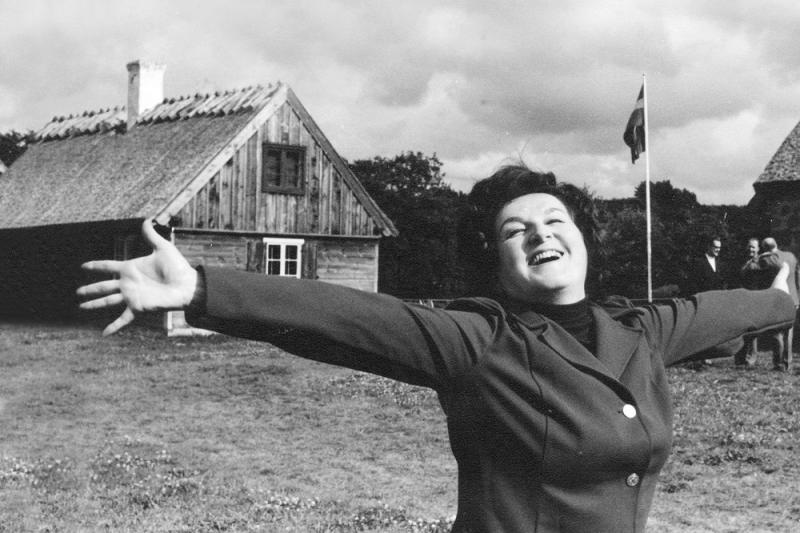
Feet firmly planted on fertile native soil, but always open to the world, lyric-dramatic soprano Birgit Nilsson soared into realms no-one from the rolling hills and coastline of Sweden’s Bjäre peninsula, where she grew up, could possibly have imagined.
Her parents’ farmhouse became a summer home, and their only child laid flowers on their grave when she gave recitals in the church at Västra Karups where she’d sung in the choir. Her huge financial legacy – Nilsson and her vetinarian husband of 58 years, Bertil Niklasson, alongside whom she is buried in the family grave of the Västra Karup churchyard, had no children – is chiefly threefold. It helped turn the family farm into a threefold museum (pictured below), with tours of the beautifully preserved main building by guided tour only, a finely crafted exhibition space and cinema in the cattle barn, café/restaurant serving Nilsson recipes in the pig barn. It also launched on the one hand the glitzy biennial Birgit Nilsson Prize and ceremony in Stockholm, where Nina Stemme was the most recent recipient, on the other the Birgit Nilsson Days on home turf, including masterclasses by distinguished singers and concerts, not least from the outstanding young talent granted the annual Birgit Nilsson Stipendium. 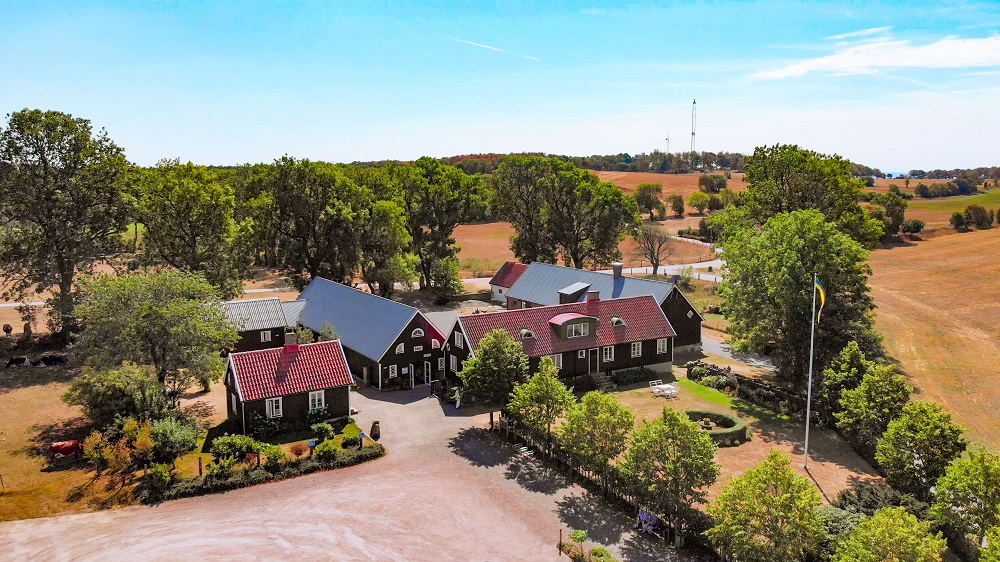 Of the three enchanting summer days I spent exploring the hills, woods, coastline, farm tracks and buildings of the Bjäre peninsula, courtesy of a meticulous programme arranged by the Birgit Nilsson Museum, accounts must be given elsewhere (and footnoted in links at the bottom of this piece as and when they appear). Suffice it to say that the warm, unaffected and still-vital personality of La Nilsson shines through in the warm welcome of museum manager Gitte Lindström-Harmark, so palpably related to the great singer in looks and opennness, and in the exhibitions at the farmhouse; I’ve never laughed so much going round a museum. Nilsson's outdoor life can be traced by following in her footsteps and along her cycle tracks in various routes laid out with options to access topical songs and arias at each signposted spot (the most charming, perhaps, are the vibrant folksongs complementing a hillock on which outdoor dances took place).
Of the three enchanting summer days I spent exploring the hills, woods, coastline, farm tracks and buildings of the Bjäre peninsula, courtesy of a meticulous programme arranged by the Birgit Nilsson Museum, accounts must be given elsewhere (and footnoted in links at the bottom of this piece as and when they appear). Suffice it to say that the warm, unaffected and still-vital personality of La Nilsson shines through in the warm welcome of museum manager Gitte Lindström-Harmark, so palpably related to the great singer in looks and opennness, and in the exhibitions at the farmhouse; I’ve never laughed so much going round a museum. Nilsson's outdoor life can be traced by following in her footsteps and along her cycle tracks in various routes laid out with options to access topical songs and arias at each signposted spot (the most charming, perhaps, are the vibrant folksongs complementing a hillock on which outdoor dances took place).
You don’t of course get to share in the hard work of farm life, such as the finger-shredding art of thinning beets (Nilsson on the left pictured below) which was part of her daily life between the ages of 13 and 23, when some savings from her mother allowed her to go and study music in Stockholm in the face of her father’s stern disapproval. 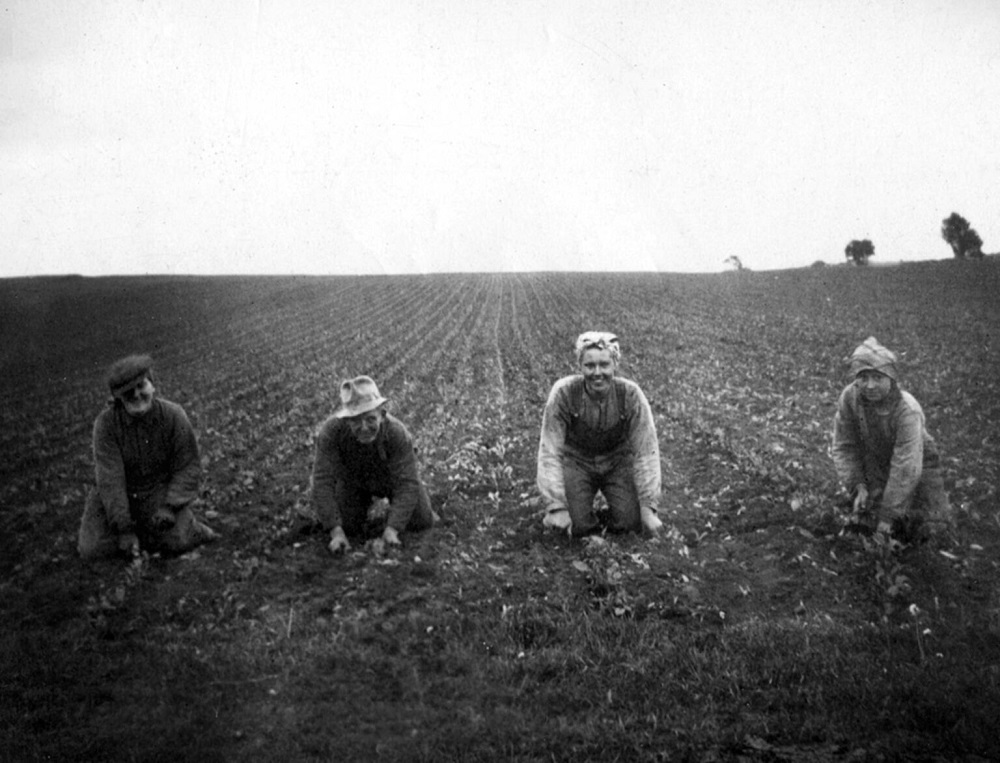 What matters here is the excellence of the performances I heard on three fine evenings at the Västra Karup church, most of them designed to send out into the world promising young singers, maybe not mostly of the one in a million kind that young Birgit undoubtedly was, but including some major talents and one budding star. It was pity to have missed the masterclasses of the wonderful Miah Persson - these are available online, but you'll need to know your Swedish - yet what shone out from the eight participants showing the results of their hard work with pianist Elisabeth Boström in the first of the three concerts was the high level of communication, the effort to project the meaning of each song or aria; you don’t get that without intense preparation.
What matters here is the excellence of the performances I heard on three fine evenings at the Västra Karup church, most of them designed to send out into the world promising young singers, maybe not mostly of the one in a million kind that young Birgit undoubtedly was, but including some major talents and one budding star. It was pity to have missed the masterclasses of the wonderful Miah Persson - these are available online, but you'll need to know your Swedish - yet what shone out from the eight participants showing the results of their hard work with pianist Elisabeth Boström in the first of the three concerts was the high level of communication, the effort to project the meaning of each song or aria; you don’t get that without intense preparation.
The singers faced another challenge due to the unusual layout of the high-ceilinged church (the exterior pictured below on a walk around the area), extended in the 19th century to accommodate the entire parish (attendance by then had become compulsory). The altar is in the middle of the T-shaped church; the singers faced the shallower seating area and gallery to the west, but also had to embrace the majority of the audience to the sides of the double nave. An appropriate greeting, Elisabeth’s “Dich, teure Halle” from Wagner's Tannhäuser, acknowledged us all in the soaring ecstasy of soprano Matilda Sterby, whose career is already launched (she sang Fiordiligi in Gothenburg Opera’s streamed Così fan tutte and will take on the role of Mozart’s Countess in Hanover and Klagenfurt this coming season). 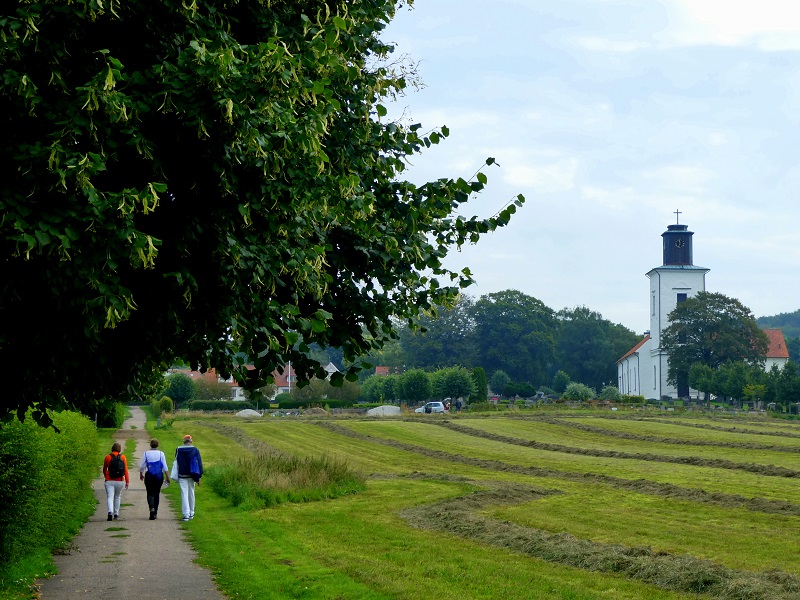
Swedish-American soprano Kristine Nowlain commanded immediate attention with a fully-lived and finely-phrased “Deh vieni, non tardar” from The Marriage of Figaro, but simply stunned us in the drama of Rebecca Clarke’s “The Seal Man”, a remarkable setting of a John Masefield poem rich in sensitive speech-melody: singers looking for strong repertoire by a woman composer, please note. 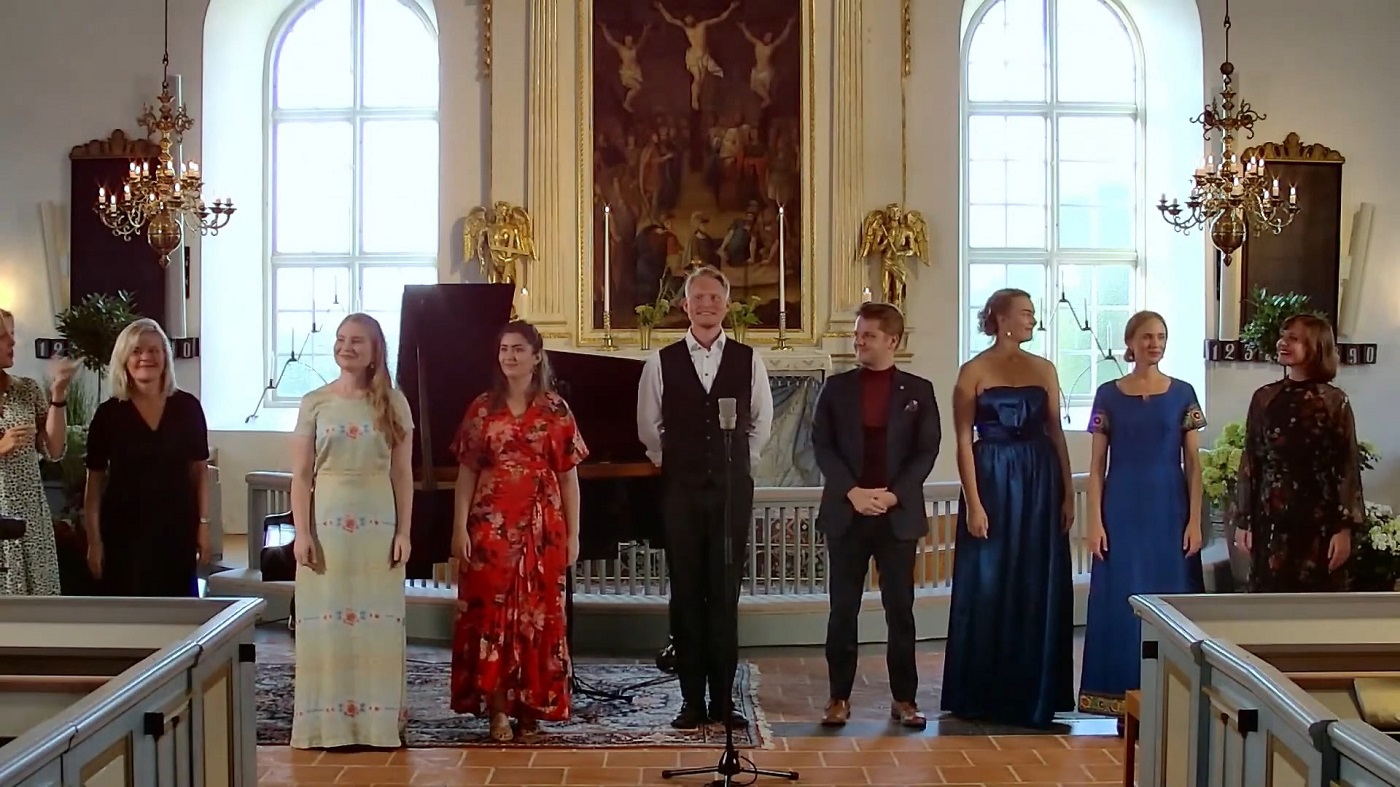 The evening ended as rapturously as it had began with Karolina Bengtsson radiant in Grieg’s “Ein Traum” ("A Dream", a Nilsson speciality), clearly responsive to the charged atmosphere of the occasion. (Pictured above: Miah Persson just visible on the left, Boström and seven of the eight masterclass participants: Bengtsson, Sofia Warden, Larsson, Ugla, Sterby, Ingrid Berg and Nowlain).
The evening ended as rapturously as it had began with Karolina Bengtsson radiant in Grieg’s “Ein Traum” ("A Dream", a Nilsson speciality), clearly responsive to the charged atmosphere of the occasion. (Pictured above: Miah Persson just visible on the left, Boström and seven of the eight masterclass participants: Bengtsson, Sofia Warden, Larsson, Ugla, Sterby, Ingrid Berg and Nowlain).
"Ein Traum" was also last on the programme of this year’s Birgit Nilsson Stipendium recipient, 28-year-old soprano Johanna Wallroth, who gave us all six of Grieg’s Op. 48 songs setting German poets. As her pianist Magnus Svensson, the best of his kind in Sweden as the recital richly proved, put it afterwards, she is “the total package”, despite only having been training as a singer for five years, redirecting her talents from dance. This fourth song from the Grieg set, “Die verschweigene Nachtigall” (“The Secretive Nightingale”), will probably tell you all you need to know.
It was as rich and as satisfying a recital as any I’ve heard. How refreshing for the pianist to take the spotlight so exquisitely in two serenades by Pauline Viardot and Wilhelm Peterson-Berger; at the “efterkonsert” meal in the museum, Svensson told me that top partners Nina Stemme and Dorothea Röschmann had encouraged him to do the same in joint recitals, but that agents and promoters had the narrow-minded view that audiences had come exclusively to hear the singers. Wallroth sang in four languages, entering character immediately as Mozart’s Susanna, with musical ornamentations perfectly fitted to the essential directness of “Deh vieni”, and Puccini’s Lauretta, desperate enough to threaten suicide by drowning in the Arno.
The complicity with Svensson brought rich results in Duparc’s “L’invitation au voyage” and Korngold’s “Was du mir bist?” ("What you are to me?"), with a thrilling flipover in the highest phrase. It was good to hear an alternative to Sibelius’s setting of “The maiden came from her lover's tryst" in Stenhammar’s equally original take (the great Swedish composer’s 150th anniversary year seems to be passing unnoticed everywhere but in his native land). Best of all for sheer humour and delight was the vivid realization of Thérèse’s liberation from breasts and sprouting of a beard in the big number from Poulenc’s Les Mamelles de Tirésias.
A special festival frisson came in the knowledge that Wallroth would be returning for the operatic concert-finale showcasing four stipendium winners and works in which Nilsson had made a special impression, though one wanted Svensson to be there too; Boström hadn’t had time to work as intensively on the alternatives to orchestral splendour as she had on the masterclass numbers, and the endless tremolos in Strauss and Wagner could have done with some toning down, especially as the church’s odd acoustics tended to amplify the sound. The first half offered Mozart arias and ensembles in need of a director; stock gestures aren’t enough. The real wonders began with Miah Persson in the spotlight singing Elsa’s Dream from Lohengrin. She is now beyond the good girls of yore – Anne Trulove, Pamina, Sophie – and this was rich proof that, given the right house (say Glyndebourne) and a sympathetic conductor, she could be perfect as Wagner’s less strenuous heroines, especially given her still-youthful looks.
Some of us already know from the Garsington production of Strauss’s Der Rosenkavalier that Persson has the capacity to be a perfect Marschallin, gracious and wistful, given the right direction. And what came as a revelation here was that a perfect Nordic cast for Rosenkavalier is to hand. Persson later admitted surprise that Wallroth’s Sophie was very much herself at that age – the opera’s unspoken theme of an older woman making a sacrifice partly so that a younger one will not have the same indignity forced on her straight out of the convent, of marriage to a man she can’t love. And Emma Sventelius, 2020 stipendium recipient, is already Octavian to the life. Everything was fully lived and embodied in the acting-out of this Presentation of the Rose and final trio plus duet. 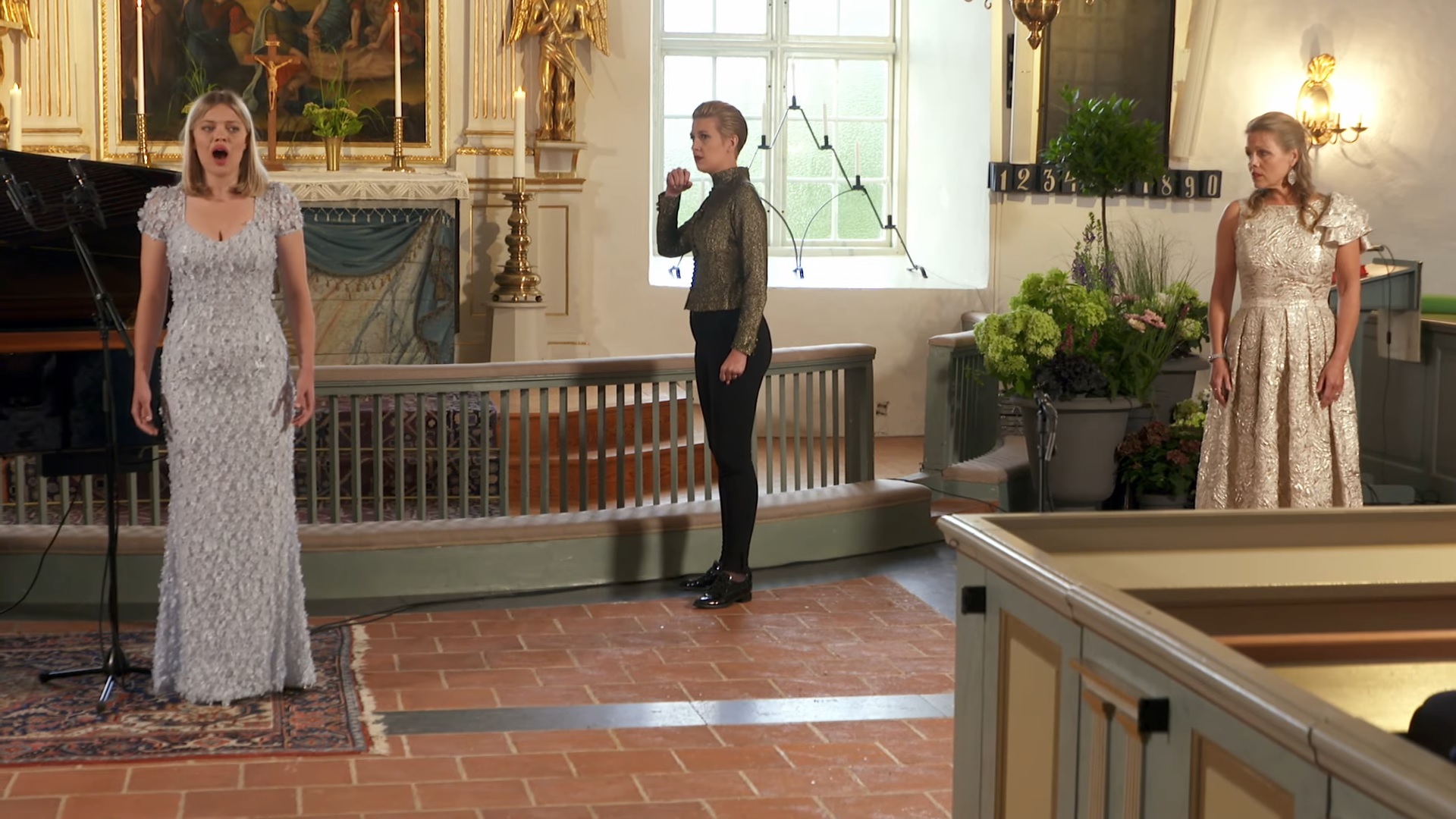 What also became clear in 2016 “stipendarist” Henning von Schulman’s second-half delivery of Banquo’s aria from Verdi’s Macbeth is that he is a true bass – much as managements seem to have denied that fact – and could step in to the role of Baron Ochs, presumably a youngish man and not the old lech that’s often depicted. Exciting times ahead: when the Swedish/Danish Rosenkavalier happens, be sure to travel to see it. And mark out a week for walking and swimming around the Bjäre peninsula too, as I intend to. The splendid new chamber concert hall with art gallery above just outside the attractive regional town of Båstad opens for events and exhibitions in October, and there’s so much more to see.
What also became clear in 2016 “stipendarist” Henning von Schulman’s second-half delivery of Banquo’s aria from Verdi’s Macbeth is that he is a true bass – much as managements seem to have denied that fact – and could step in to the role of Baron Ochs, presumably a youngish man and not the old lech that’s often depicted. Exciting times ahead: when the Swedish/Danish Rosenkavalier happens, be sure to travel to see it. And mark out a week for walking and swimming around the Bjäre peninsula too, as I intend to. The splendid new chamber concert hall with art gallery above just outside the attractive regional town of Båstad opens for events and exhibitions in October, and there’s so much more to see.
- The three concerts are currently online: the masterclass event here, the stipendium winner's recital here and the opera finale here
- The Birgit Nilsson Museum pages on the Birgit Nilsson website (an excellent timeline of the singer's life with more detailed information is on the homepage
- Read opera reviews on theartsdesk
Add comment
The future of Arts Journalism
You can stop theartsdesk.com closing!
We urgently need financing to survive. Our fundraising drive has thus far raised £49,000 but we need to reach £100,000 or we will be forced to close. Please contribute here: https://gofund.me/c3f6033d
And if you can forward this information to anyone who might assist, we’d be grateful.

Subscribe to theartsdesk.com
Thank you for continuing to read our work on theartsdesk.com. For unlimited access to every article in its entirety, including our archive of more than 15,000 pieces, we're asking for £5 per month or £40 per year. We feel it's a very good deal, and hope you do too.
To take a subscription now simply click here.
And if you're looking for that extra gift for a friend or family member, why not treat them to a theartsdesk.com gift subscription?
more Opera
 Hamlet, Buxton International Festival review - how to re-imagine re-imagined Shakespeare
Music comes first in very 19th century, very Romantic, very French operatic creation
Hamlet, Buxton International Festival review - how to re-imagine re-imagined Shakespeare
Music comes first in very 19th century, very Romantic, very French operatic creation
 Falstaff, Glyndebourne review - knockabout and nostalgia in postwar Windsor
A fat knight to remember, and snappy stagecraft, overcome some tedious waits
Falstaff, Glyndebourne review - knockabout and nostalgia in postwar Windsor
A fat knight to remember, and snappy stagecraft, overcome some tedious waits
 Salome, LSO, Pappano, Barbican review - a partnership in a million
Asmik Grigorian is vocal perfection in league with a great conductor and orchestra
Salome, LSO, Pappano, Barbican review - a partnership in a million
Asmik Grigorian is vocal perfection in league with a great conductor and orchestra
 Semele, Royal Opera review - unholy smoke
Style comes and goes in a justifiably dark treatment of Handelian myth
Semele, Royal Opera review - unholy smoke
Style comes and goes in a justifiably dark treatment of Handelian myth
 Le nozze di Figaro, Glyndebourne review - perceptive humanity in period setting
Mostly glorious cast, sharp ideas, fussy conducting
Le nozze di Figaro, Glyndebourne review - perceptive humanity in period setting
Mostly glorious cast, sharp ideas, fussy conducting
 Fidelio, Garsington Opera review - a battle of sunshine and shadows
Intimacy yields to spectacle as Beethoven's light of freedom triumphs
Fidelio, Garsington Opera review - a battle of sunshine and shadows
Intimacy yields to spectacle as Beethoven's light of freedom triumphs
 Dangerous Matter, RNCM, Manchester review - opera meets science in an 18th century tale
Big doses of history and didaction are injected into 50 minutes of music theatre
Dangerous Matter, RNCM, Manchester review - opera meets science in an 18th century tale
Big doses of history and didaction are injected into 50 minutes of music theatre
 Mazeppa, Grange Park Opera review - a gripping reassessment
Unbalanced drama with a powerful core, uninhibitedly staged
Mazeppa, Grange Park Opera review - a gripping reassessment
Unbalanced drama with a powerful core, uninhibitedly staged
 Saul, Glyndebourne review - playful, visually ravishing descent into darkness
Ten years after it first opened Barrie Kosky's production still packs a hefty punch
Saul, Glyndebourne review - playful, visually ravishing descent into darkness
Ten years after it first opened Barrie Kosky's production still packs a hefty punch
 Così fan tutte, Nevill Holt Festival/Opera North review - re-writing the script
Real feeling turns the tables on stage artifice in Mozart that charms, and moves
Così fan tutte, Nevill Holt Festival/Opera North review - re-writing the script
Real feeling turns the tables on stage artifice in Mozart that charms, and moves
 La Straniera, Chelsea Opera Group, Barlow, Cadogan Hall review - diva power saves minor Bellini
Australian soprano Helena Dix is honoured by fine fellow singers, but not her conductor
La Straniera, Chelsea Opera Group, Barlow, Cadogan Hall review - diva power saves minor Bellini
Australian soprano Helena Dix is honoured by fine fellow singers, but not her conductor
 The Queen of Spades, Garsington Opera review - sonorous gliding over a heart of darkness
Striking design and clear concept, but the intensity within comes and goes
The Queen of Spades, Garsington Opera review - sonorous gliding over a heart of darkness
Striking design and clear concept, but the intensity within comes and goes

Comments
"Singers looking for strong